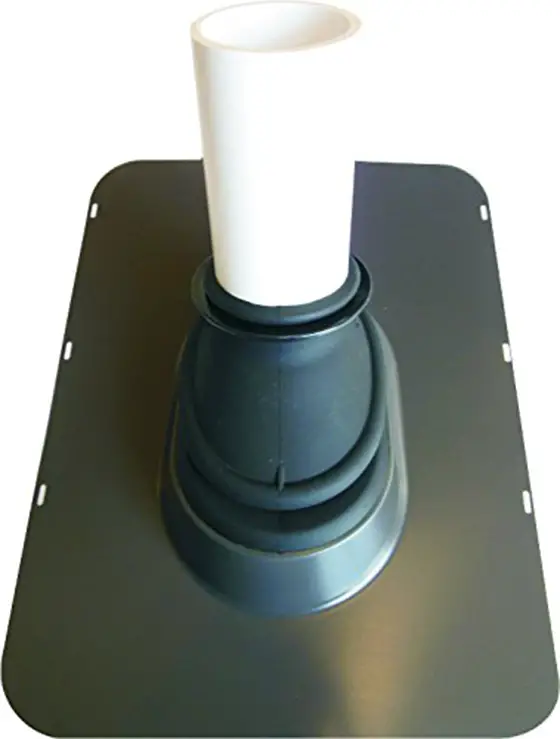
Repairing roof flashing leaks is a critical task for homeowners looking to maintain the integrity and longevity of their roof. A leaky flashing can lead to significant water damage to your home, affecting your insulation, interior walls, and potentially even the foundation. Roof flashing protects the vulnerable intersections of your roof and walls, and this essential component is frequently overlooked. This comprehensive guide will walk you through the process of identifying, diagnosing, and effectively repairing roof flashing leaks. We will cover the causes, signs, different repair techniques, and preventative measures. Get ready to strengthen your roof’s ability to withstand the elements!
Understanding Roof Flashing and Its Importance
What is Roof Flashing?
Roof flashing is a crucial component of any roof system. It’s essentially a waterproof material that protects vulnerable areas where your roof meets walls, chimneys, vents, and other penetrations. These areas are especially susceptible to water damage, because they are typically areas of stress and are therefore prone to leaks.
Why is Roof Flashing Important?
Properly installed roof flashing acts as a barrier against water intrusion. Without it, water can easily penetrate these vulnerable joints, leading to significant damage, including interior water damage, costly repairs, and potential structural issues. Addressing flashing problems is a preventative measure to maintain a sound roof for years to come.
Common Causes of Roof Flashing Leaks
Several factors can contribute to roof flashing leaks. Improper installation during construction is a primary cause. Over time, flashing can become damaged due to weather exposure. Expansion and contraction of materials due to temperature changes, or impacts can also create cracks or gaps in the flashing.
Identifying the Signs of Roof Flashing Leaks
Visible Signs of Water Damage
Look for obvious signs of water damage around flashing areas, such as discoloration or staining on the exterior or interior walls, ceilings, or insulation. These signs often manifest as darkened areas, or as a damp feeling in the area. Keep an eye out for signs of water pooling or dripping in areas near the roofline.
Interior and Exterior Water Stains
Closely examine the areas where the roof meets the walls, especially around chimneys, valleys, and vents for any signs of moisture damage. Water stains are an unmistakable sign of a problem. Check for dark spots or discoloration on the interior walls, ceilings, or insulation
Unusual Moisture Accumulation
Another potential indication is unusual moisture build-up in areas around the roofline, such as excessive condensation or dampness around vents or walls near the roof. Unusual moisture accumulation should prompt immediate investigation to identify the source.
Common Repair Techniques for Roof Flashing Leaks
Assessing the Extent of the Damage
Before beginning any repair, thoroughly assess the extent of the damage. This step is crucial to determine if the repair is something you can handle yourself, or whether professional assistance is required. Determine the source of the leaks, and look at the specific areas to be repaired.
Replacing Damaged Flashing
For significant damage or wear, replacing the damaged flashing is often necessary. Ensure the replacement material is compatible with the existing roofing system and adheres to local building codes. Choose roofing materials that are weather-resistant. If in doubt, call a roofing contractor.
Repairing Damaged or Worn Areas
If the damage is less extensive, you may be able to repair the affected area instead of replacing the entire section. This often involves patching damaged areas with appropriate flashing materials, using techniques such as caulking or using flashing tape.
Preventative Measures for Future Roof Flashing Leaks
Regular Inspections
Regularly inspect your roof flashing, especially after severe weather events or periods of heavy rain. Prompt attention to leaks can save you from significant damage.
Proper Maintenance
Maintaining your roof flashing involves promptly addressing any signs of damage and repairing or replacing affected areas. Make sure to repair any damage immediately to prevent further issues.
Hiring a Professional
If you lack confidence or experience with roof repairs, consider contacting a qualified professional roofing contractor to perform inspections or repairs. Having a professional handle the job will ensure the long-term integrity of your roof.
The Importance of Professional Roofing Help
Identifying Complex Issues
Sometimes, roof flashing leaks stem from complex issues requiring professional diagnosis. A professional can use specialized tools and expertise to identify and diagnose problems that are difficult for a homeowner to detect.
Ensuring Proper Repairs
Professional roofing contractors possess the knowledge and expertise to provide effective repairs and ensure that the repair is carried out according to building codes and best practices, avoiding further damage. This prevents further damage and expensive repairs.
Avoiding Potential Hazards
Rooftop work can pose safety risks. Working on the roof yourself may be unsafe in certain cases, so relying on a qualified professional is the safest option.
Frequently Asked Questions
What are the most common materials used for roof flashing?
Roof flashing is often made from metal, such as copper, zinc, or aluminum. Other materials, including PVC and various types of plastic, are also used. The choice of material depends on factors such as cost, weather resistance, and aesthetic preferences.
How much does it cost to repair a roof flashing leak?
The cost of repairing a roof flashing leak can vary significantly depending on the extent of the damage and the required repair techniques. Factors such as the type of flashing, labor costs, and any additional repairs needed all contribute to the total cost. Contact local roofing contractors for quotes.
In conclusion, repairing roof flashing leaks is a crucial aspect of maintaining a sound and weather-tight roof. By understanding the various causes, identifying the signs, and implementing appropriate repair techniques, homeowners can effectively prevent further damage and costly repairs. Remember to prioritize safety and seek professional assistance when necessary. For any further questions or assistance with roof flashing repairs, don’t hesitate to contact a qualified roofing professional.